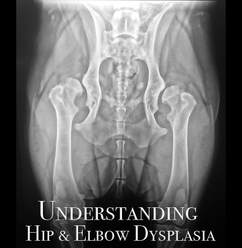Online Course
Understanding Hip and Elbow Dysplasia
Understanding Hip and Elbow Dysplasia
|
Sort through the myths, mysteries, opinions, and anecdotes and learn the facts about hip and elbow dysplasia!
In this class, we will look at the latest cutting-edge research into the causes of hip and elbow dysplasia and how you can reduce or even prevent dysplasia in your dogs. We will talk about the heritabilities of hip and elbow dysplasia and show you the most effective selection techniques like estimated breeding values (EBV). We will also review environmental factors in the development of dysplasia, why they are important, and how to use them to improve the quality of the hips and elbows in your own dogs. Researchers have been able to dramatically reduce hip dysplasia in dogs, and you can too. |
What students are saying about the course:
"Your course was surely the best thing I did in 2015." "Oooo this is what I've been hoping for! "Learned more new things!" "I can't wait for the new info, this has been so fascinating." "This information has been invaluable and so well organized. Thank you so much!!!" "I have had such a good time thinking about all of this information." |
TOPICS
|
|
|
ABOUT THE COURSE
No other disorders result in more pain and suffering in dogs than hip and elbow dysplasia. They are genetic and tend to run in families, yet two dogs with excellent hips can produce puppies with dysplastic hips, and dogs with poor hips can produce puppies with good hips. After more than 50 years of research, we still don't know the all the causes and we haven't found the genes. However, we do know something about heritability and some of the risk factors, and there are things breeders can do that can dramatically reduce the risk of dysplasia in the puppies they breed. You will learn about the anatomy and biomechanics of the canine hip and elbow and the known risk factors for dysplasia. You will learn how to use information about heritability and modern selection strategies like estimated breeding values to make better breeding decisions. |
COURSE INFO
How long, how much? Course is 10 weeks and $125. You can work at your own pace and re-take the course as many times as you want. How much time will it take? Generally there will be 2-3 hours of reading each week. Some people will do more, some will do less. How will we meet? We will have a private Facebook Group where we can discuss and ask questions, each at your own convenience. Is there a textbook? No. All materials will be provided. |
Join us as we sort through the myths, mysteries, opinions, and anecdotes, and learn the facts about hip and elbow dysplasia!


